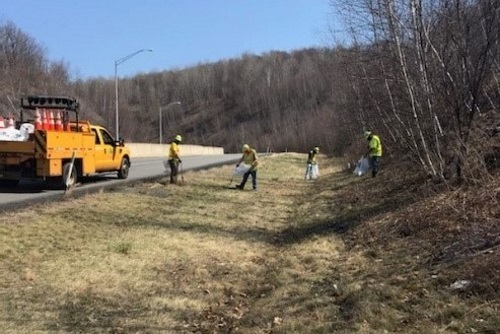FEDERAL ACTION
AASHTO Comments on CEQ’s Proposed NEPA Changes – AASHTO Journal
EPA Outlines $7.4B for Water Infrastructure Headed to States – AP
What’s Next for Biden’s Build Back Better Act? – Illuminem
Reconciliation bill: Transportation secretaries from rural states raise alarm over green energy provision – Fox Business
Federal Highway Administration Unveils Infrastructure Investment and Jobs Act `One-Stop Shop’ Website, Publishing Request for Information – FHWA (Media Release)
COVID-19
New US travel rules: What you need to know about the changes prompted by Omicron – CNN
INFRASTRUCTURE RESILIENCE AND SUSTAINABILITY
Governors, State DOT CEOs Talk Infrastructure At Summit – AASHTO Journal
Illinois DOT Working to Develop Sustainable Pavements – AASHTO Journal
A changing climate is buckling concrete and flooding roads. States are moving slowly to guard the nation’s infrastructure. – Washington Post
AIR QUALITY
Port slowdowns worsen air pollution in neighboring communities – Marketplace
Could Roads Recharge Electric Cars? The Technology May Be Close. – New York Times
Port of LA seeks proposals for zero-emission truck project – Container Management
Why doesn’t Indiana have a car emissions inspection program? – Indy Star
Researchers eye alternative energy to power North Carolina state ferries – Coastal Review
Autonomous trucks can drastically cut emissions (Here’s how) – ZDNet
ENVIRONMENTAL JUSTICE
A Conversation with Louisiana DOTD Secretary and AASHTO President Dr. Shawn Wilson – AASHTO’s ETAP Podcast
Public Transit Pivots Toward Equity, Accessibility in 2021 – Government Technology
NATURAL RESOURCES
NCDOT is building highway bridges for wildlife as well as humans – News & Observer
Siesta Key residents hope mini reefs will help improve water quality, ecosystem in canals – WFLA
CULTURAL RESOURCES
Highway Historical Sign Repair And Replacement Underway In Idaho – Idaho Transportation Department
HEALTH AND HUMAN ENVIRONMENT/ACTIVE TRANSPORTATION
Automating the War on Noise Pollution – CityLab
Golden Gate Bridge bicycling speed limit takes effect Jan. 1 – Marin Independent Journal
Bikes and pedestrians over cars envisioned for busy downtown Aspen corridor – Aspen Times
Cleveland Metroparks awarded $950,000 to advance transportation projects – Cleveland Jewish News
Signage Along Cleveland Bike Lanes Causing Frustrations For Cyclists, Confusion For Drivers – WJW-TV
Electric Bicycle Demo Program ‘EZBike Project’ Gets Underway In Santa Maria, California – Santa Barbara County Association of Governments
Why Are Cities Hostile to Strollers? – The New Republic
Abandoned rail line to be converted into 32-mile recreational trail through central Maine – Morning Sentinel
LA Paves the Way to Closing Gap in 14-Mile Bicycle Network From Santa Monica to Exposition Park – KNBC-TV
Bike infrastructure will help prevent crashes and fatalities, advocates and researchers say – Capital News Service
Why Communities Should Adopt Vision Zero to Curb Traffic Fatalities – Route Fifty (Commentary)
TRB RESOURCES/ANNOUNCEMENTS
TRB Webinar: The Mighty River – Inland Waterway Resilience Analysis – TRB
TRB Webinar: Examining Exclusions – What’s Missing in the Historic Review Process? – TRB
TRB’s Sustainability and Emerging Transportation Technology (SETT) Conference – TRB
Address Climate Change and Breathe Easier with Research on Transportation Emissions – TRB
FEDERAL REGISTER NOTICES
Clean Air Act Advisory Committee (CAAAC): Notice of Meeting – EPA (Notice)
National Environmental Justice Advisory Council; Notification for a Virtual Public Meeting – EPA (Notice)
Air Plan Approval; FL, GA, NC, SC; Interstate Transport (Prongs 1 and 2) for the 2015 8-Hour Ozone Standard – EPA (Final rule)
Broadband Infrastructure Deployment – FHWA (Final rule)
Infrastructure and Investment Jobs Act Request for Information – FHWA (Notice)
National Forest System Land Management Planning; Correction – USDA (Technical correction)
Development of Guidance for Electric Vehicle Charging Infrastructure Deployment – FHWA (Notice)
Buy America Request for Information – USDOT and EPA (Notice)


